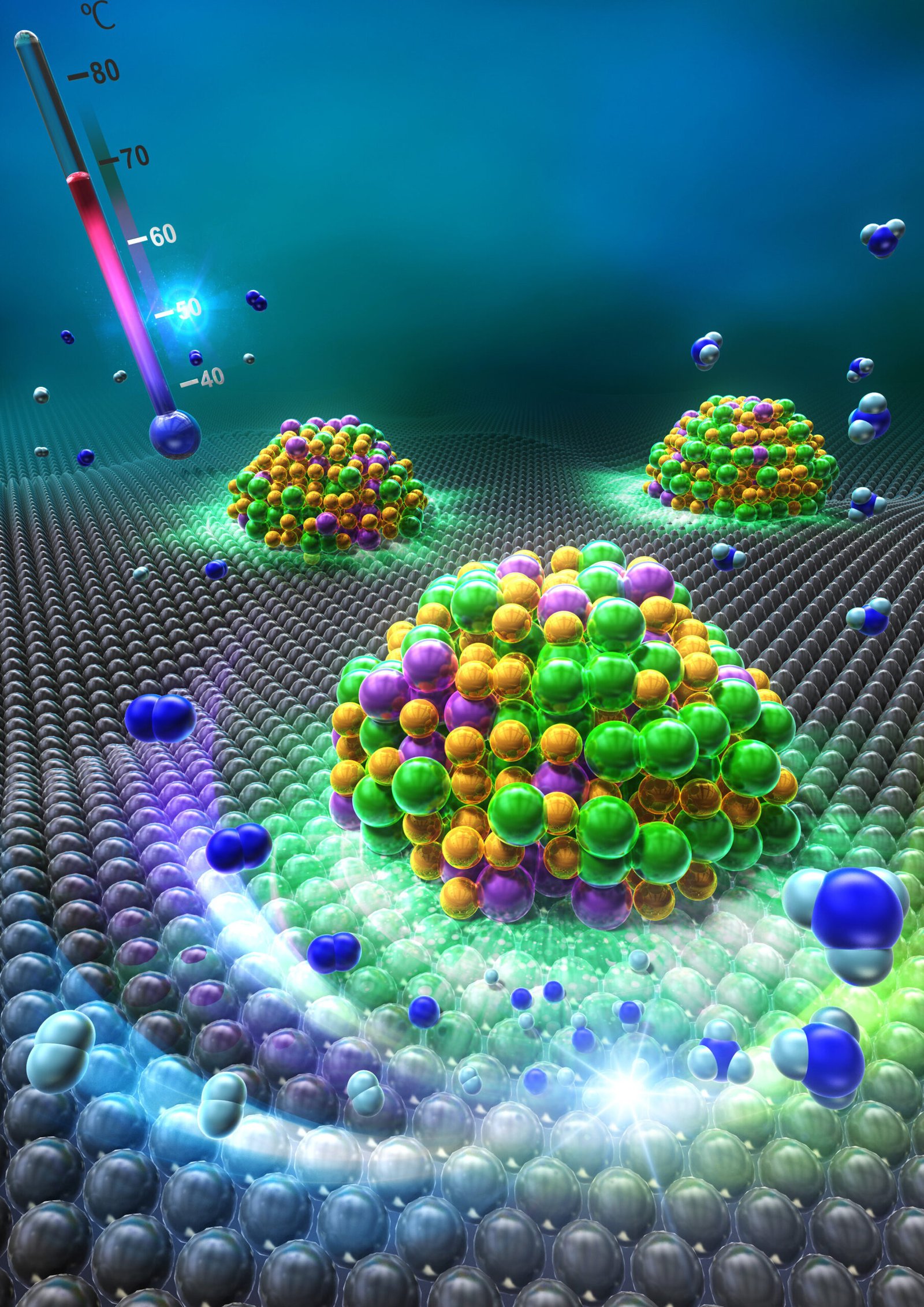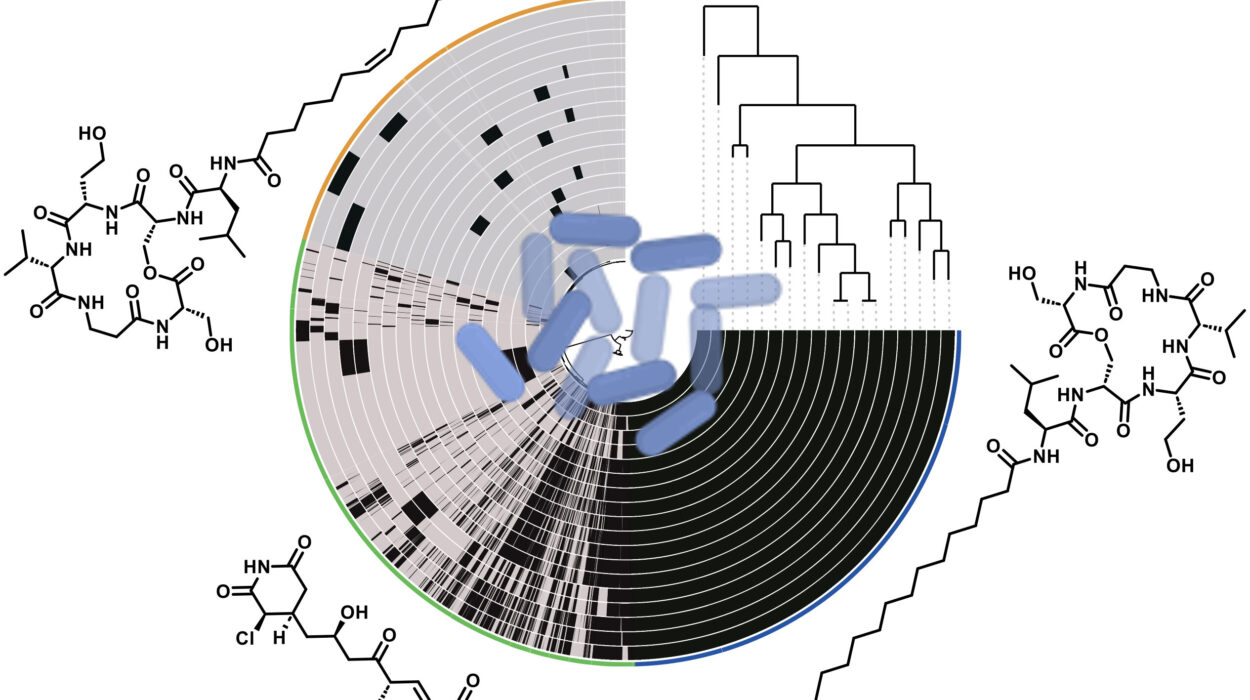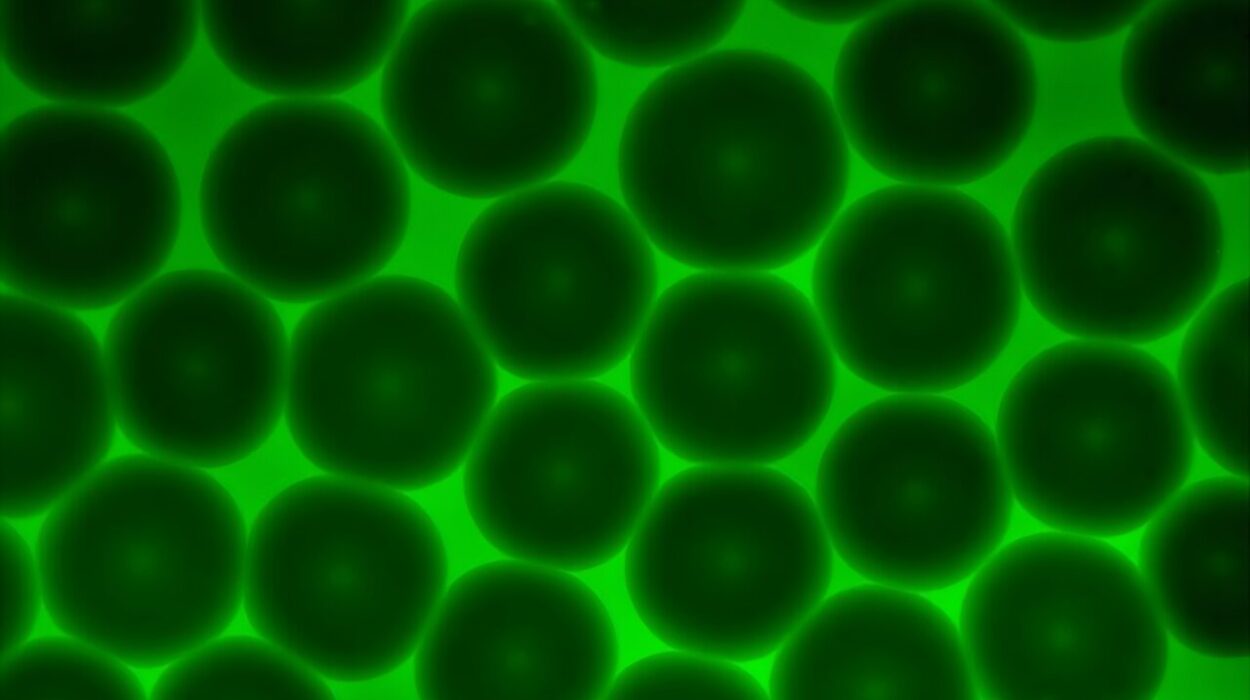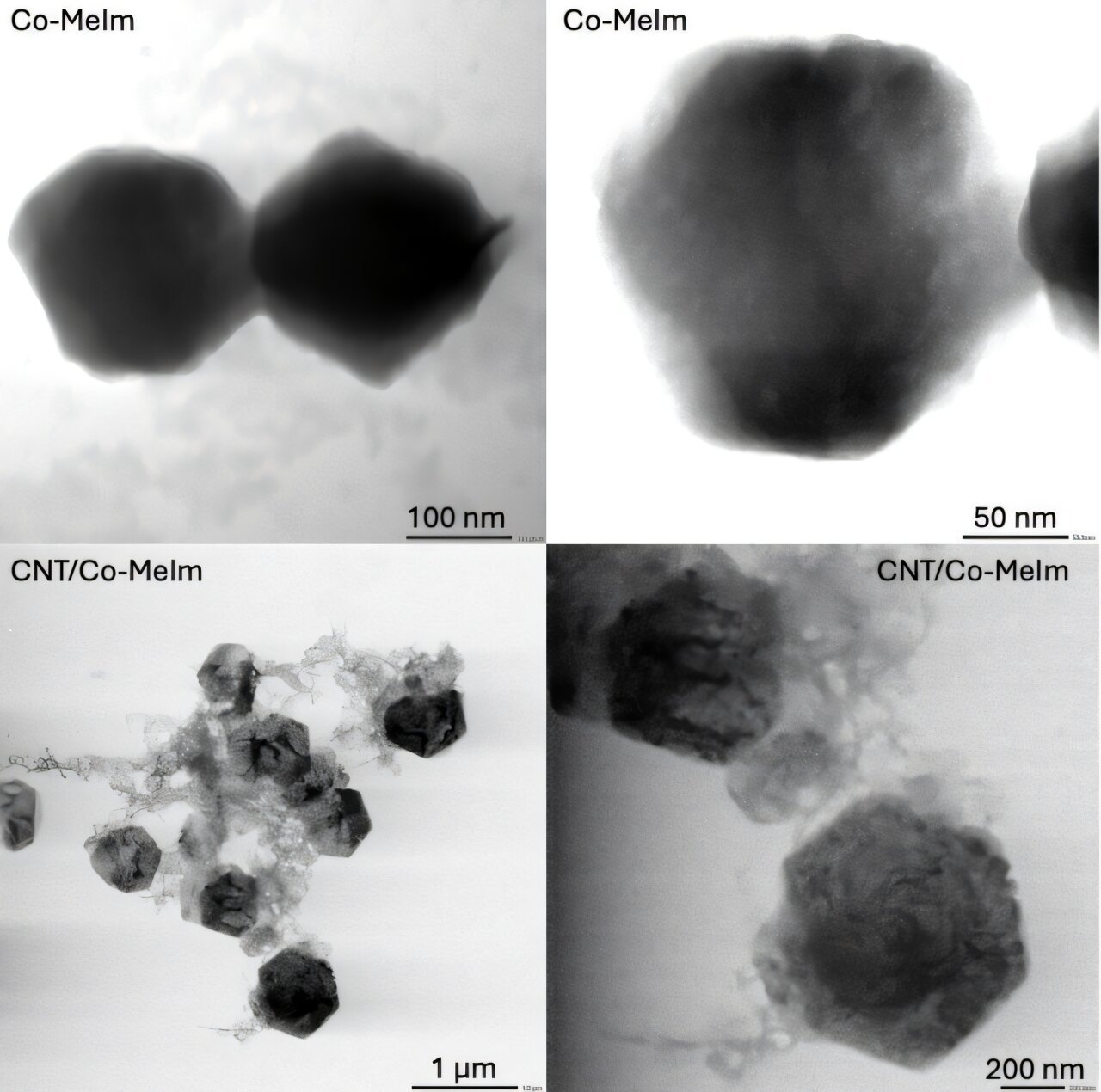Ammonia (NH3) is one of the most crucial chemicals in today’s world, serving as the backbone of fertilizer production and, consequently, playing a vital role in boosting agricultural yields and sustaining the rapidly growing global population. The production of ammonia has become indispensable to meeting global food demands. For over a century, NH3 production has relied on a process known as the Haber–Bosch (HB) process, which combines nitrogen (N₂) from the atmosphere and hydrogen (H₂) into ammonia in the presence of a catalyst, typically iron. However, despite numerous efforts to improve efficiency, the process has mostly maintained its original catalytic structure. That all changed with a new breakthrough in catalyst design by researchers at the Institute of Science Tokyo.
The HB Process: A Century-Old Legacy
The Haber–Bosch (HB) process has been the foundation of ammonia synthesis since its development in the early 20th century by German chemists Fritz Haber and Carl Bosch. This process, which combines nitrogen and hydrogen under high pressures and temperatures in the presence of a catalyst, led to a revolution in fertilizer production and enabled the world’s population to grow dramatically over the last century. Despite the overwhelming success of the HB process, the catalyst used in commercial reactors has changed surprisingly little over the years. The main catalyst in use today, an iron-based catalyst known as Promoted-Fe, has been in use for over a century with few challengers on the horizon.
Interestingly, while efforts to improve the catalyst’s energy efficiency have been continuous, no new material has surpassed Promoted-Fe in terms of NH3 production rate per catalyst volume—the critical measure of efficiency in modern catalytic processes. In traditional NH3 synthesis reactions, the productivity of the catalyst depends not only on the amount of catalyst used but more significantly on its volume, meaning the density and design of the catalyst within the reactor become pivotal factors in the rate of NH3 production.
Over the years, research on alternative catalysts often relied on measurements of NH3 production based on catalyst weight instead of volume. This can lead to misleading comparisons and ultimately prevent meaningful advances in improving catalyst performance in the reactor environment. Ironically, even when new catalysts achieve higher NH3 production rates based on their weight, these improvements often do not translate into better performance on an industrial scale, where the true limiting factor is catalyst volume.
A Game-Changing Catalyst Design by Institute of Science Tokyo
In the face of these challenges, a team led by Professor Michikazu Hara at the Institute of Science Tokyo took a radically different approach to catalyst design. As outlined in their groundbreaking research published in Advanced Science on January 23, 2025, the team revolutionized the structural makeup of the catalyst to address the volume-related challenges of conventional catalyst materials. Through innovative thinking, Hara and his colleagues constructed metal catalysts with an inverse structure, radically different from conventional designs that prioritize high surface area and low catalyst density.
The Traditional Catalyst Design
Traditional supported metal catalysts for NH3 production typically consist of metal particles (like iron) deposited on a high-surface-area support material, designed to maximize the catalyst’s effective surface area while minimizing its bulk density. This common design improves NH3 production rates based on catalyst weight, as more surface area is exposed to nitrogen and hydrogen, making the catalytic reaction more efficient.
However, this approach often results in a lower NH3 production rate per catalyst volume due to the low density of these catalysts. The sparse distribution of the active metal particles limits the total reaction sites per unit volume, thereby hindering overall catalytic efficiency at the industrial scale, where maximizing catalyst volume is essential.
The Inverse Catalyst Design
To overcome the limitations of this traditional structure, the research team at the Institute of Science Tokyo flipped the conventional design on its head. Instead of relying on high surface area supported metal catalysts, the team devised a new approach in which larger metal particles, such as iron, were used as the catalyst foundation. By integrating larger particles, the metal could maintain a high density, while appropriate promoters were added to enhance catalytic activity.
The breakthrough was the design of an inverse catalyst structure: instead of fine, low-density metal particles deposited onto a support, this innovative design placed larger iron particles at the center, surrounded by promoter-loaded regions, creating a kind of “concentric” structure where active catalytic sites were distributed across the catalyst volume.
“In this inverse catalyst design,” says Professor Hara, “the key active sites are arranged in a way that allows highly efficient reactions to occur from the center of the particle outward to the surface. This helps maximize active sites across the entire catalyst volume, which directly enhances its performance in ammonia synthesis.”
Aluminum Hydride-Potassium Iron Catalyst: A New Leader in NH3 Synthesis
Through systematic experimentation and material synthesis, the research team tested several combinations before identifying the optimal material: a catalyst composed of aluminum hydride (AlH) and potassium (K+) promoters, loaded onto relatively larger iron (Fe) particles. This combination—referred to as AlH-K+/Fe—produced promising results, far surpassing Promoted-Fe in several critical areas.
The catalytic performance of this AlH-K+/Fe inverse catalyst was extraordinary: it achieved a NH3 production rate per catalyst volume approximately three times that of Promoted-Fe, a result that has not been matched by any other catalyst to date.
Furthermore, the team demonstrated that this novel catalyst operated at far lower temperatures than Promoted-Fe, with ammonia synthesis occurring even at 50 °C. In contrast, Promoted-Fe typically fails to catalyze reactions at such low temperatures, rendering the development highly significant.
“Not only did the new catalyst outperform Promoted-Fe, but it also displayed remarkable stability, producing ammonia consistently without any degradation in activity over a period of 2,000 hours,” Hara comments. This exceptional durability and activity suggest that the new catalyst could lead to longer operational lifetimes and lower energy costs in industrial NH3 production.
Mechanisms Behind the Catalyst’s Superior Performance
The team further examined the chemical mechanisms underlying the remarkable performance of the AlH-K+/Fe catalyst. Through mechanistic studies, they determined that the inverse structure of the catalyst plays a vital role in boosting its electron donation capabilities, especially at the surface of the metal particles. This design significantly increased the density of active sites per unit area.
In particular, the efficient splitting of nitrogen (N₂) molecules—the rate-limiting step in the NH3 synthesis process—was substantially improved. With a larger number of accessible active sites in the AlH-K+/Fe catalyst structure, nitrogen molecules could more readily react, dramatically increasing the overall production rate.
Towards a Sustainable Future: Implications for Climate Change
The breakthrough of this new catalyst opens up exciting possibilities for greener and more efficient industrial NH3 production. Given that ammonia is critical for the production of fertilizers and food security globally, increasing the efficiency of ammonia synthesis could have a far-reaching impact on addressing pressing environmental concerns. Currently, ammonia synthesis using the Haber–Bosch process is energy-intensive and relies on fossil fuels, contributing significantly to greenhouse gas emissions. By improving the efficiency of ammonia production—especially at lower temperatures and under less energy-consuming conditions—this new catalyst design could significantly reduce the environmental footprint of fertilizer production, helping to mitigate climate change.
Moreover, the new catalyst design leverages easily available, earth-abundant materials, suggesting a pathway to scalable, cost-effective, and sustainable industrial processes. Its potential could transform not only fertilizer production but other applications where efficient ammonia synthesis plays a role.
Conclusion
The research conducted by the team from the Institute of Science Tokyo marks a monumental step forward in the quest for more efficient and sustainable ammonia production. Their development of an inverse structure catalyst with a significant boost in NH3 production per catalyst volume is an exciting breakthrough that has already outperformed established technologies. As the team continues to refine their catalyst designs, this innovation could reshape the fertilizer industry and have far-reaching effects on global food security and environmental sustainability.
Reference: Masashi Hattori et al, Ammonia Synthesis Over an Iron Catalyst with an Inverse Structure, Advanced Science (2025). DOI: 10.1002/advs.202410313





